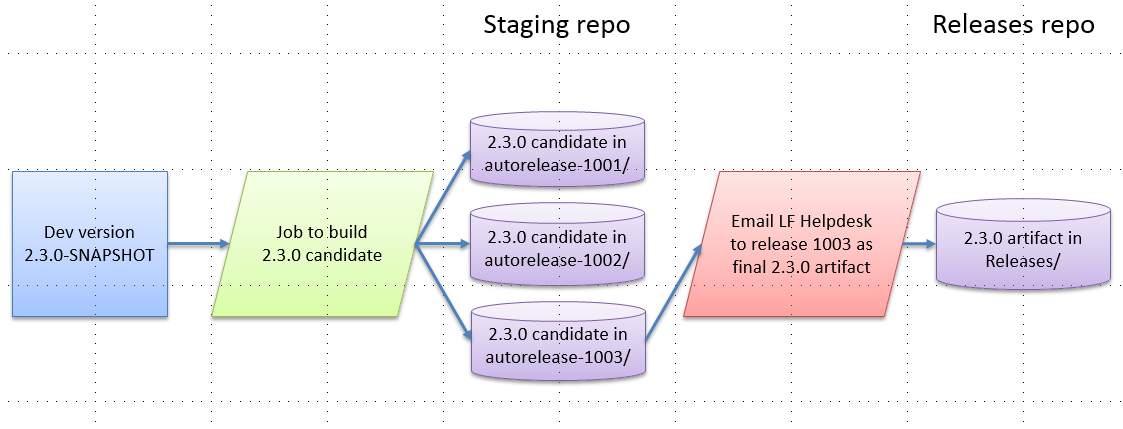Benefits
- No unexpected build failures due to upstream SNAPSHOT changes
- No need for cross-project consolidated “mega builds” to check dependency issues
- Avoids issues with trying to synchronize artifact version numbers across projects
- Improved dev and build cycle time
Guidelines
- No cross-project SNAPSHOT dependencies
- Teams to version and release on own schedule
- Source control central artifact version manifest
- Teams to declare the “correct version” for cross-project use
- TSC to approve version manifest for simultaneous release, e.g. Amsterdam
- Maven plugin to warn against outdated dependencies vs. the manifest
Java (Maven) Artifacts
- Set up -release-version jobs to deploy candidate artifacts to Staging
- Generates candidate “autorelease-xxxx” directories in Nexus
- Email helpdesk@onap.org to select a candidate as formal release artifact
- Specify the specific Jenkins build job that generated the selected candidate build, e.g. https://jenkins.onap.org/view/oparent/job/oparent-master-release-version-java-daily/16/
- LF to sign and release the artifacts to Releases repo
- LF to sign and tag the version in Gerrit repo
- Update the declared version numbers for your respective artifacts in the manifest located in the integration repo: https://git.onap.org/integration/tree/versions/java-manifest.csv
- Bump your own version numbers for ongoing development
- SNAPSHOT versions in pom.xml
- Staging/Release version in version.properties
Docker Images
Proposed Java/Docker versioning flow:
- Produce SNAPSHOT Java artifact. Test this in a SNAPSHOT docker image.
- Produce staging (release candidate) Java artifact. Test this in a SNAPSHOT docker image.
- Produce release Java artifact by picking one of the candidates from staging.
- Produce STAGING docker image using the release Java artifact. Use this in E2E test flows.
- Produce RELEASE docker image by picking one of the candidate STAGING docker images.
